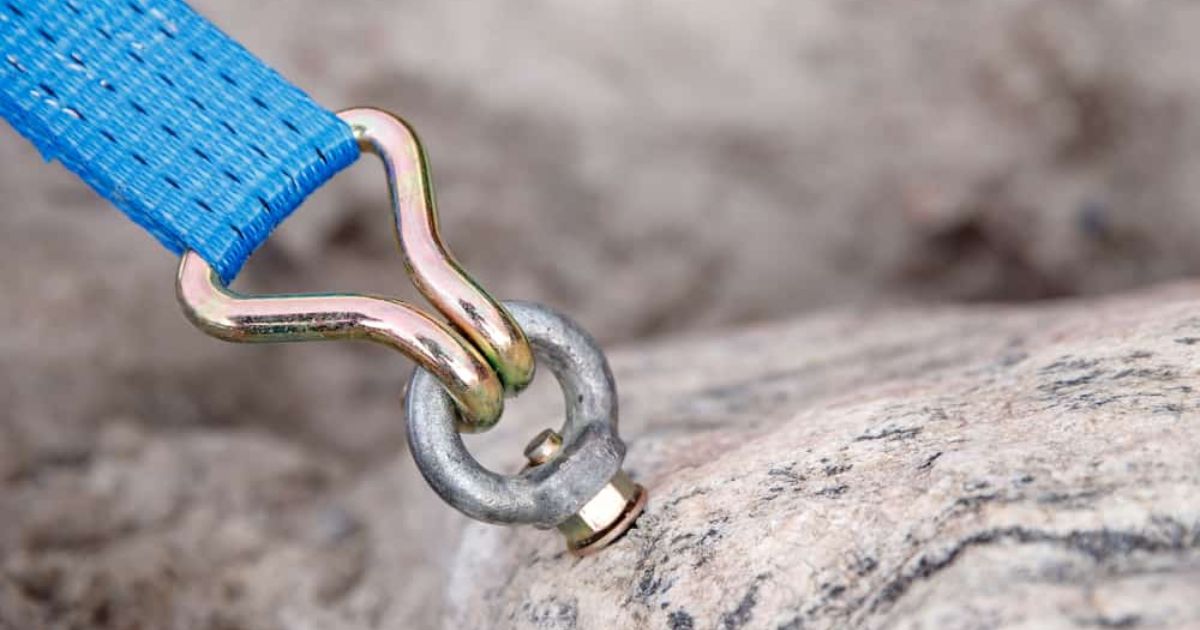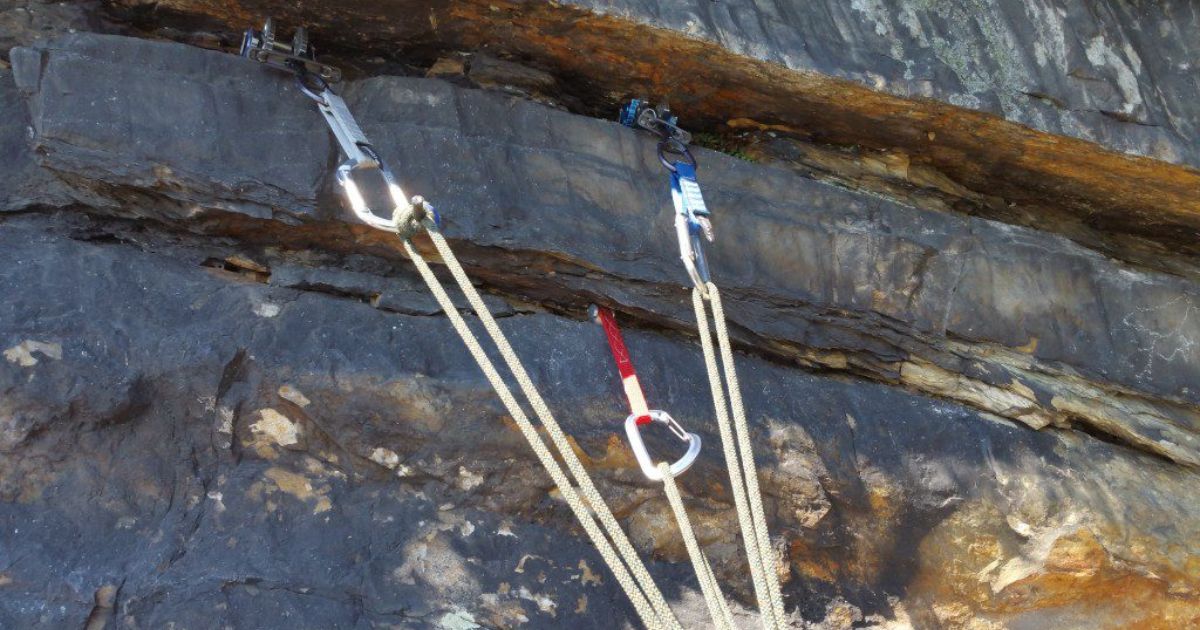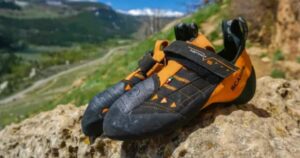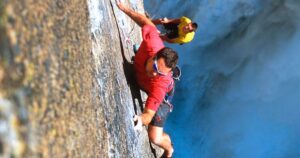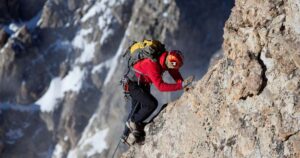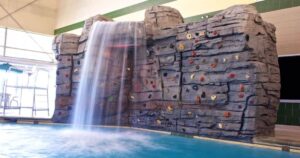Rock climbing anchors are the unsung heroes that keep climbers safe and secure while scaling vertical heights. They function as the vital connection between the climber and the rock, serving as a lifeline in precarious situations. Just like the steadfast roots of a mighty tree, these anchors provide stability and confidence, allowing climbers to focus on their ascent. In this article, we will delve into the inner workings of rock climbing anchors, exploring their purpose, types, components, setup, testing, and best practices.
Key Takeaways
- Rock climbing anchors provide a secure attachment point for climbers to rest or protect themselves.
- Proper placement and choice of anchor material are crucial for stability and reliability.
- Regular testing, evaluation, and maintenance are essential to ensure the strength and durability of anchors.
- Common mistakes to avoid include inadequate equipment, poor anchor placement, and neglecting backup systems.
The Purpose of Rock Climbing Anchors
The purpose of rock climbing anchors is to provide a secure attachment point for climbers to safely rest or protect themselves while ascending or descending a rock face. These anchors serve as crucial points of connection between climbers and the rock, ensuring their safety and stability during the climb. There are several advantages to using rock climbing anchors. Firstly, they allow climbers to take breaks and rest, reducing fatigue and increasing overall endurance.
Additionally, anchors provide protection in the event of a fall, minimizing the risk of injury. However, it is important to note that improper placement of rock climbing anchors can lead to serious consequences. Common mistakes include using weak or unreliable anchor points, neglecting redundancy, and insufficiently evaluating the quality of the rock for anchor placement. To ensure safety, climbers must possess a thorough understanding of proper anchor placement techniques and regularly assess the integrity of their anchors.
Types of Rock Climbing Anchors
When it comes to rock climbing anchors, the type of anchor material used and proper placement are crucial factors to consider. The choice of anchor material can vary depending on the specific climbing route and conditions. Additionally, knowing how to properly place the anchors on the rock surface ensures their stability and reliability, providing a secure attachment point for climbers.
Anchor Material Options
Various types of rock climbing anchors are available, offering climbers a range of anchor material options to choose from. When it comes to anchor materials, climbers have to consider the pros and cons of different options and compare the strengths of each material. Here are two common anchor material options:
- Nylon Webbing:
- Pros:
- Lightweight and easy to carry.
- Provides flexibility when constructing anchors.
- Cons:
- Susceptible to UV damage and degradation over time.
- Can absorb water, reducing its strength.
- Static Rope:
- Pros:
- Durable and long-lasting.
- Resistant to UV damage and moisture.
- Cons:
- Heavier compared to webbing.
- More difficult to handle and tie knots with.
These anchor material options provide climbers with different benefits and considerations. It is important for climbers to choose the material that best suits their needs and the specific climbing situation they will encounter.
Proper Anchor Placement
Rock climbers must carefully consider proper anchor placement to ensure the safety and stability of their ascent. Improper anchor placement can result in anchor failure, which poses significant risks to climbers. There are different types of rock climbing anchors that climbers can use, depending on the terrain and the availability of natural features. Common types include fixed bolts, removable bolts, traditional gear placements, and natural features such as trees or boulders.
It is crucial to assess the strength and reliability of the anchor points, as well as the direction of the load and potential rockfall hazards. Additionally, regular anchor maintenance is essential to prevent corrosion and wear. Climbers should inspect their anchors regularly, replace worn or damaged gear, and ensure proper cleaning and lubrication to maintain the integrity of the anchors. By understanding anchor failure risks and following anchor maintenance tips, climbers can enhance their safety and enjoy a more secure climbing experience.
Components of a Rock Climbing Anchor
One essential aspect of a rock climbing anchor is its various components, which work together to ensure the safety and stability of the anchor during the climb. The components of a rock climbing anchor include:
- Anchor Points: These are the points where the anchor is attached to the rock or other solid structures. They need to be strong and secure to withstand the forces exerted during climbing.
- Bolts: These are drilled into the rock and provide a fixed point for the anchor.
- Natural Features: These include cracks, flakes, or boulders that can be used as reliable anchor points.
- Connecting Devices: These are used to link the anchor points and distribute the load evenly.
- Carabiners: These metal clips are used to attach the climbing rope to the anchor.
- Slings: These are webbing materials used to create loops that connect the anchor points.
Understanding the strength of the rock climbing anchor and the causes of anchor failure is crucial for climbers to ensure their safety while enjoying the thrill of the sport.
Setting Up Rock Climbing Anchors
To properly establish rock climbing anchors, climbers must carefully set up the anchor system using appropriate techniques and equipment. There are common mistakes that climbers should avoid when setting up rock climbing anchors. One of the most common mistakes is using inadequate or improper equipment, such as using weak or worn-out ropes or carabiners. Another mistake is not equalizing the anchor points properly, which can lead to an uneven distribution of forces and potential failure.
To mitigate these mistakes, climbers can employ innovative techniques for setting up rock climbing anchors. These techniques include using equalization devices, such as cordelettes or slings, to distribute forces evenly among anchor points. Additionally, climbers can use self-equalizing anchors, which automatically adjust as the load shifts. By employing these techniques, climbers can ensure the stability and strength of their rock climbing anchors. In the subsequent section, we will discuss the importance of testing and evaluating rock climbing anchors to ensure their reliability and safety.
Testing and Evaluating Rock Climbing Anchors
Testing and evaluating the reliability and safety of rock climbing anchors is crucial for ensuring their effectiveness in supporting climbers. To determine the strength of a rock climbing anchor, several tests are conducted. These tests involve applying a specific load to the anchor and measuring its ability to withstand that load.
Some common anchor strength testing methods include pull testing, where a force is applied to the anchor in the direction it is intended to hold, and dynamic testing, which simulates the impact of a falling climber. In addition to anchor strength testing, evaluating anchor durability is also important. This involves examining the anchor for signs of wear and damage, such as corrosion or deformation, that could compromise its integrity. Regular inspections and maintenance are essential to ensure the long-term reliability of rock climbing anchors.
Best Practices for Using Rock Climbing Anchors
Ensuring the reliability and safety of rock climbing anchors involves following best practices for their proper use. By adhering to these guidelines, climbers can minimize the risk of accidents and maintain the integrity of the anchors. Here are some key best practices for using rock climbing anchors:
- Anchor Maintenance: Regularly inspect anchors for wear and tear, such as frayed ropes or corroded bolts. Replace any damaged or compromised components promptly to ensure their effectiveness.
- Common Anchor Mistakes: Avoid these common mistakes when using rock climbing anchors:
| Mistake | Best Practice |
|---|---|
| Overloading anchors | Ensure anchors are rated for the anticipated load |
| Incorrect equalization | Use proper anchor equalization techniques |
| Poor anchor placement | Select solid and reliable features for anchoring |
| Improper rope management | Keep ropes away from sharp edges and potential abrasives |
| Neglecting backup systems | Use redundant anchors or safety lines as a backup |
Frequently Asked Questions
What Are the Different Types of Rock Climbing Anchors and When Would You Use Each Type?
Different types of rock climbing anchors include natural features, removable gear, and fixed hardware. The choice of anchor depends on factors such as rock quality, climbing style, and environmental considerations. It is important to follow best practices to ensure safety and minimize impact on the climbing area.
How Do You Properly Clean and Maintain Rock Climbing Anchors to Ensure Their Longevity?
Proper cleaning and maintenance of rock climbing anchors is crucial for ensuring their longevity. Regular inspection, cleaning, and replacement of worn-out components are essential steps in caring for anchors, providing climbers with a safe and reliable climbing experience.
What Are Some Common Mistakes or Errors to Avoid When Setting up Rock Climbing Anchors?
When setting up rock climbing anchors, it is important to avoid common mistakes and errors. Proper techniques include ensuring equalized load distribution, using appropriate hardware, and considering the rock quality.
Can You Explain the Process of Equalizing Rock Climbing Anchors and Why It Is Important?
Equalizing rock climbing anchors is a crucial process that ensures equal distribution of force among multiple anchor points, reducing the risk of anchor failure. This technique is important for maintaining stability and safety during climbing activities.
Are There Any Regulations or Guidelines for Rock Climbing Anchors in Certain Climbing Areas or National Parks?
Regulations and guidelines for rock climbing anchors vary among different climbing areas and national parks. These rules are designed to ensure safety, protect the environment, and maintain the integrity of the climbing routes. Compliance with these regulations is crucial for responsible climbing practices.
Conclusion
In conclusion, rock climbing anchors play a crucial role in ensuring the safety and stability of climbers. By understanding the different types of anchors and their components, climbers can effectively set up and test their anchors to minimize risks. It is essential to follow best practices and regularly evaluate the strength and reliability of anchors to ensure a safe climbing experience. As the saying goes, “A strong anchor is the lifeline that keeps climbers grounded amidst the vertical challenges of rock climbing.”
